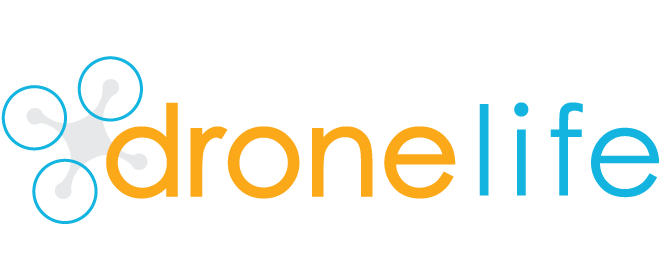 Last week, NVIDIA announced the world’s smallest supercomputer, designed for artificial intelligence “at the edge.” This technology – the continued miniaturization of incredibly powerful computing systems – could transform the drone industry.
Last week, NVIDIA announced the world’s smallest supercomputer, designed for artificial intelligence “at the edge.” This technology – the continued miniaturization of incredibly powerful computing systems – could transform the drone industry.
AI is a buzz word in the drone industry today. Software, hardware and sensor producers all claim to provide “AI-driven insights” or “AI-driven safety.” One of the examples where AI really has the potential to make an impact is in processing large data sets. Software can already make the first pass through hundreds or thousands of images and point out those that are of specific interest: when they can make not only the first pass but be so accurate that they don’t require a person to review and annotate, all of that aerial data could become even more useful.
Developing accurate AI models require a lot of data, time, and compute power: they’re generally developed far from the field using generic data sets (thousands of images of cell towers, for example). But not every cell tower (or bridge, or solar panel) looks the same – ideally, a drone could “learn” on the job, while flying over the site it needs to inspect, a process known as computing “on the edge.” That requires small, lightweight, powerful computers that can be placed on the drone or other device without shortening flight time or otherwise interfering with function: NVIDIA’s new offering makes this more possible.
The following is an NVIDIA press release.
NVIDIA Announces Jetson Xavier NX, World’s Smallest Supercomputer for AI at the Edge
Latest Addition to Jetson Product Family Brings Xavier Performance to Nano Form Factor for $399
SANTA CLARA, Calif.—Nov. 6, 2019—NVIDIA today introduced Jetson XavierTM NX, the world’s smallest, most powerful AI supercomputer for robotic and embedded computing devices at the edge.
With a compact form factor smaller than the size of a credit card, the energy-efficient Jetson Xavier NX module delivers server-class performance up to 21 TOPS for running modern AI workloads, and consumes as little as 10 watts of power.
Jetson Xavier NX opens the door for embedded edge computing devices that demand increased performance but are constrained by size, weight, power budgets or cost. These include small commercial robots, drones, intelligent high-resolution sensors for factory logistics and production lines, optical inspection, network video recorders, portable medical devices and other industrial IoT systems.
“AI has become the enabling technology for modern robotics and embedded devices that will transform industries,” said Deepu Talla, vice president and general manager of Edge Computing at NVIDIA. “Many of these devices, based on small form factors and lower power, were constrained from adding more AI features. Jetson Xavier NX lets our customers and partners dramatically increase AI capabilities without increasing the size or power consumption of the device.”
Jetson Xavier NX delivers up to 14 TOPS (at 10W) or 21 TOPS (at 15W), running multiple neural networks in parallel and processing data from multiple high-resolution sensors simultaneously in a Nano form factor (70x45mm). For companies already building embedded machines, Jetson Xavier NX runs on the same CUDA-X AITM software architecture as all Jetson offerings, ensuring rapid time to market and low development costs.
As part of NVIDIA’s one software architecture approach, Jetson Xavier NX is supported byNVIDIA JetPackTM software development kit, which is a complete AI software stack that can run modern and complex AI networks, accelerated libraries for deep learning as well as computer vision, computer graphics, multimedia and more.
Ecosystem Support
Jetson Xavier NX is receiving strong support from the robotics and embedded devices ecosystem.
“NVIDIA’s embedded Jetson products have been accelerating the research, development and deployment of embedded AI solutions on Lockheed Martin’s platforms,” said Lee Ritholtz, director and chief architect of Applied Artificial Intelligence at Lockheed Martin. “With Jetson Xavier NX’s exceptional performance, small form factor and low power, we will be able to do more processing in real time at the edge than ever before.”
“Our goal is to dramatically increase the quality and accuracy of our optical inspection system and accelerate our move towards industry 4.0,” said Otsuka Hiroshi, CEO of Musashi Seimitsu. “NVIDIA Jetson Xavier NX gives us the compute capabilities to improve our visual inspection capabilities without increasing the size and power of our optical inspection system.”
NVIDIA also announced today that it topped all five benchmarks measuring the performance of AI inference workloads in data centers and at the edge — building on the company’s equally strong position in recent benchmarks measuring AI training. The results of MLPerf Inference 0.5, the industry’s first independent AI benchmark for inference, demonstrate the inference capabilities of NVIDIA TuringTM GPUs for data centers and the NVIDIA XavierTM system-on-a-chip for edge. The Jetson Xavier NX module is built around a new low-power version of the Xavier SoC used in these benchmarks.
“In a world where AI chips are announced on what seems like a daily basis, I believe NVIDIA raised the bar with its Jetson Xavier NX — showing that exceptional performance at small size and low power, together with a consistent and powerful software architecture, is what matters in embedded edge computing,” said Patrick Moorhead, president and principal analyst of Moor Insights & Strategy.
Jetson Xavier NX module specifications:
- GPU: NVIDIA Volta with 384 NVIDIA CUDA cores and 48 Tensor Cores, plus 2x NVDLA
- CPU: 6-core Carmel Arm 64-bit CPU, 6MB L2 + 4MB L3
- Video: 2x 4K30 Encode and 2x 4K60 Decode
- Camera: Up to six CSI cameras (36 via virtual channels); 12 lanes (3×4 or 6×2) MIPI CSI-2
- Memory: 8GB 128-bit LPDDR4x; 51.2GB/second
- Connectivity: Gigabit Ethernet
- OS Support: Ubuntu-based Linux
- Module Size: 70x45mmJetson Xavier NX is the latest addition to the Jetson family, which includes Jetson NanoTM, theJetson AGX XavierTM series and the Jetson TX2 series. Jetson Xavier NX offers a rich set of IOs, from high-speed CSI and PCIe to low-speed I2Cs and GPIOs. Compatibility with many peripherals and sensors, together with its small form factor and big performance, will bring new capabilities to embedded AI and industrial IoT systems.Jetson Xavier NX is also pin-compatible with Jetson Nano, allowing shared hardware designs and those with Jetson Nano carrier boards and systems to upgrade to Jetson Xavier NX. It also supports all major AI frameworks, including TensorFlow, PyTorch, MxNet, Caffe and others.
Priced at $399, the Jetson Xavier NX module will be available in March from NVIDIA’s distribution channels for companies looking to create high-volume production edge systems.
Miriam McNabb is the Editor-in-Chief of DRONELIFE and CEO of JobForDrones, a professional drone services marketplace, and a fascinated observer of the emerging drone industry and the regulatory environment for drones. Miriam has penned over 3,000 articles focused on the commercial drone space and is an international speaker and recognized figure in the industry. Miriam has a degree from the University of Chicago and over 20 years of experience in high tech sales and marketing for new technologies.
For drone industry consulting or writing, Email Miriam.
TWITTER:@spaldingbarker
Subscribe to DroneLife here.

